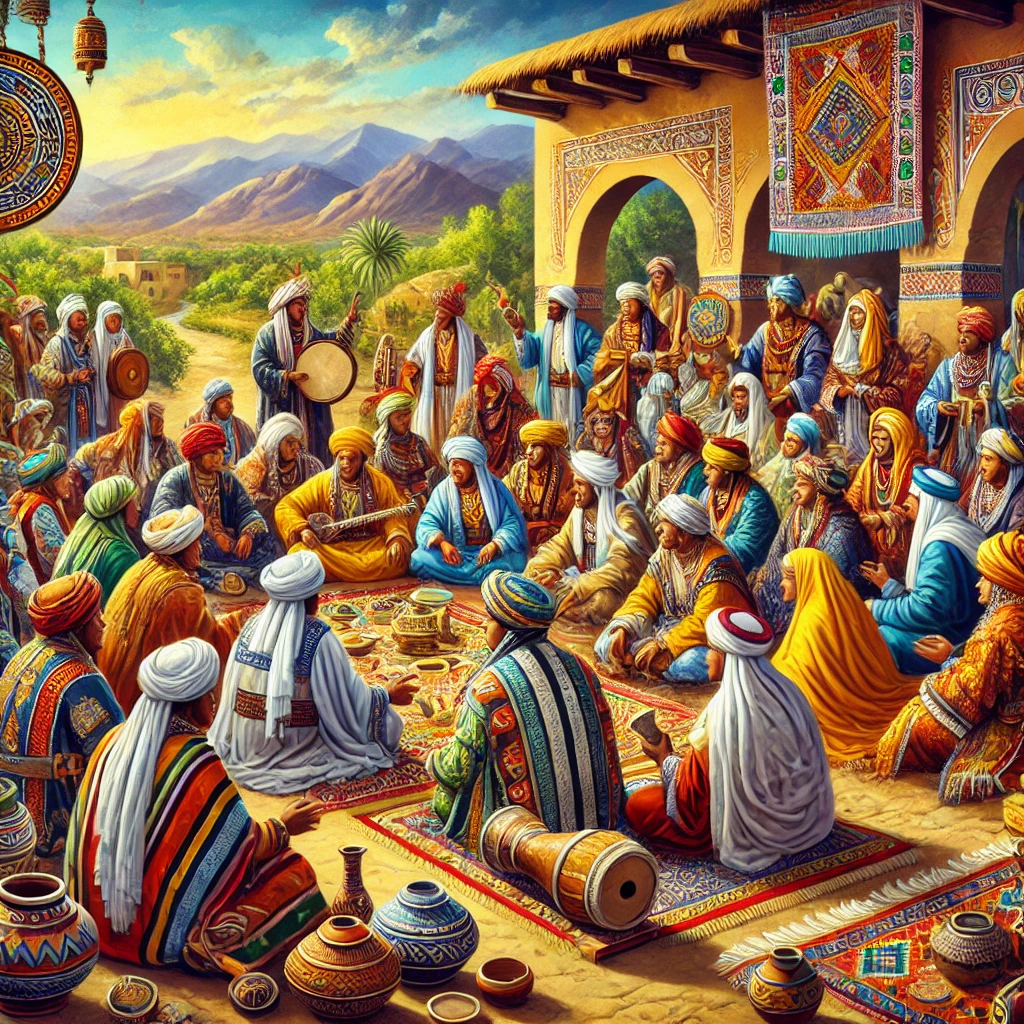Introduction to the Amaziğ People and Their Culture
The Amaziğ people, also known as Berbers, are one of the oldest indigenous groups in North Africa. Their rich culture and history stretch back thousands of years. Despite various influences over time, the Amaziğ have managed to preserve their unique identity and traditions.
Origins and Historical Background
The exact origins of the Amaziğ people are still debated. Some theories suggest they descended from ancient Egyptians, while others propose connections to the Middle East or Europe. Evidence shows they have been in North Africa for at least 10,000 years. Early Amaziğ societies were among the first to establish organized communities in the region, practicing advanced farming and herding techniques.
Influence of Ancient Civilizations
Over the centuries, the Amaziğ interacted with many ancient civilizations, including the Phoenicians, Greeks, Romans, and Arabs. These interactions influenced Amaziğ culture and language but did not erase their distinct identity. The Carthaginians introduced the Amaziğ to maritime trade, expanding their influence along the Mediterranean coast.
Community and Family Values
Amaziğ culture places a strong emphasis on community and family. Extended families often live together, providing support and care for one another. Respect for elders is a key value, with older individuals revered for their wisdom and experience. Family gatherings are important, with meals providing opportunities for bonding and storytelling.
Music and Dance
Music and dance are vital parts of Amaziğ culture. Traditional instruments like drums and flutes are used during celebrations and festivals. These events bring communities together to celebrate their shared heritage through music, dance performances, storytelling sessions, and traditional games. Music serves as a way to pass down traditions and values from one generation to the next.
Creative Expression
Amaziğ art is known for its intricate designs and vibrant colors. Pottery, textiles, and jewelry are all important aspects of Amaziğ craftsmanship. Each piece often tells a story or represents a particular tribe or region. Art not only serves as a form of expression but also helps preserve the Amaziğ identity.
Geographic Distribution
The Amaziğ people live across a vast region that includes Algeria, Tunisia, Libya, Mali, Niger, and Burkina Faso. Their presence is particularly strong in Morocco and Algeria. Despite the diverse landscapes they inhabit, the Amaziğ maintain a cohesive cultural identity that unites them across national boundaries.
Language, Literature, and Art
The Amaziğ language, Tamazight, is a symbol of their identity. Despite facing suppression, Tamazight has persisted, thanks to the resilience of the Amaziğ people. Oral storytelling, especially poetry, plays a significant role in preserving their heritage. Amaziğ literature and art reflect their rich history and cultural pride.
Customs, Traditions, and Beliefs
Amaziğ customs and traditions are deeply rooted in their daily lives. Tattoos are common among Amaziğ women, symbolizing strength, beauty, and fertility. Traditional music, especially played on the gimbri (a stringed instrument), is central to their cultural celebrations. Carpet weaving is another important tradition, with each design telling a unique story or representing a specific tribe.
Religious Practices
Most Amaziğ people follow Islam, but they have also retained many pre-Islamic beliefs. Animism, the belief that spirits exist in all things, is still present in their culture. Ceremonies and sacrifices are performed to ward off evil spirits and bring good luck, blending traditional beliefs with Islamic practices.
Contemporary Significance
Today, the Amaziğ make up about 20-25% of the population in North Africa. They continue to face challenges such as discrimination and economic marginalization but remain steadfast in preserving their unique identity and heritage. There has been a revival of Amaziğ culture in recent years, with renewed interest in their language, traditions, and customs.
Notable Amaziğ Figures
The Amaziğ have produced notable figures in various fields, including arts, politics, and academia. These individuals play a crucial role in promoting and preserving Amaziğ culture and raising awareness about their contributions to society.
Challenges and Future Outlook
Despite their rich heritage, the Amaziğ face ongoing challenges, including political marginalization and economic difficulties. However, there are many initiatives and organizations working to support Amaziğ culture. By preserving their language, art, and traditions, the Amaziğ are building a path toward a more inclusive future.
Conclusion
The Amaziğ people have a rich and diverse culture that has withstood the test of time. By understanding their history, values, and traditions, we can appreciate the unique contributions they have made to the world. Embracing Amaziğ culture helps us gain a deeper understanding of human history and promotes a more inclusive society.






